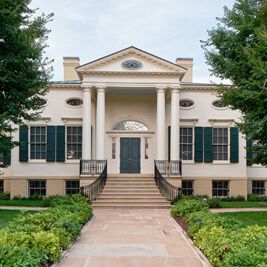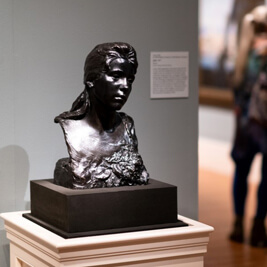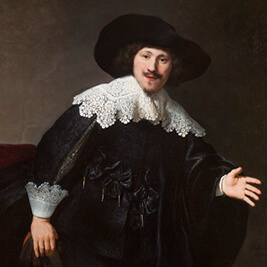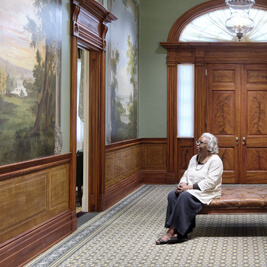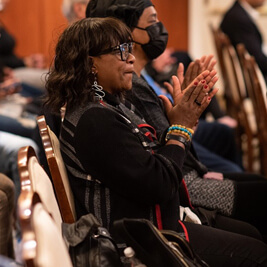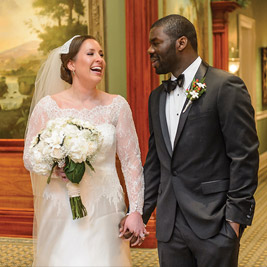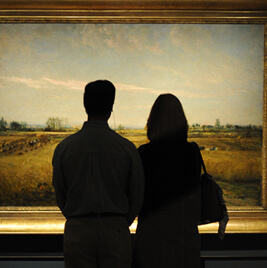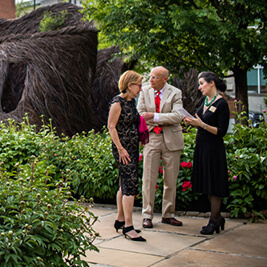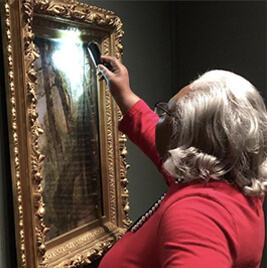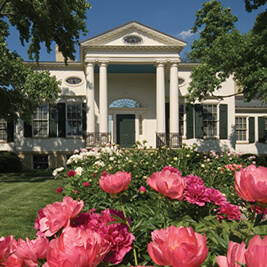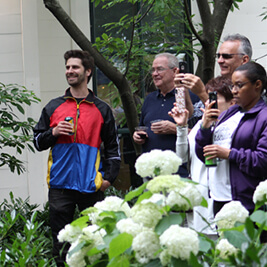- Do + See
- Dine + Host
- Give + Join
- Educate + Learn
The Elegance of Dress | Jane Austen-Era Fashion in Art
by Angela Fuller, Associate Registrar/Assistant Curator
Jane Austen wrote her beloved novels during the Regency, a moment in British history centered around the period from 1811 to 1820, when the Prince of Wales reigned as substitute—or “regent”—for the mentally ill King George III. If you’ve seen screen adaptations of Austen’s novels, you can probably picture the quintessential Regency-era gown—white, high-waisted, and flowy—that her heroines frequently wear on film.
European middle- and upper-class women’s fashion evolved dramatically from the late 1700s to the early 1800s. Garments that restricted the torso with tight lacing and artificially exaggerated the hips were replaced with clothes that fit the body’s natural form. Waistlines rose to rest just beneath the bust, emulating the simple, draped garments of ancient Greek sculpture.
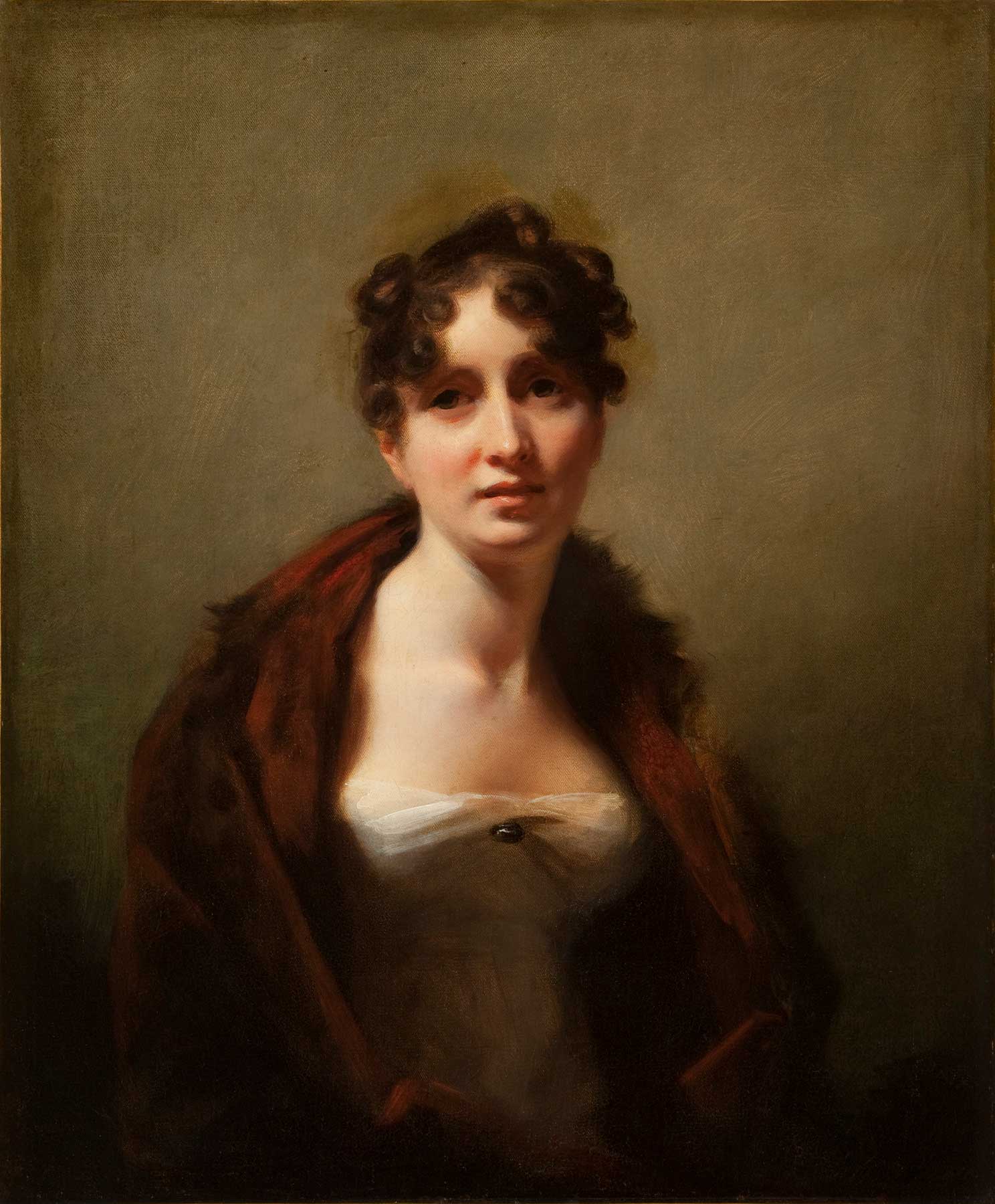
Henry Raeburn (Scottish, 1756–1823), "Jane Fraser Tytler" (died 1861) , about 1810, oil on canvas. Taft Museum of Art, 1931.424
Two paintings in the Taft’s collection showcase these Regency-era trends. In their portraits, Jane Fraser Tytler (image at left) and Elizabeth James Parkyns (image below) both wear high-waisted white gowns made of pristine muslin—a sheer cotton fabric handmade in India. French queen Marie Antoinette popularized muslin gowns in Paris in the 1780s. To the aristocracy, the garment appeared revolutionary for its simplicity and sensational for its resemblance to a nightgown. The trend spread to Britain’s upper-class women after the famous actress Mary Robinson (whose portrait also resides at the Taft Museum of Art) wore a muslin gown in 1782 that was modeled on Marie Antoinette’s.
Soon, muslin gowns were everywhere. British factories began to produce machine-made muslin as a cheaper alternative to the handmade variety imported from India. In Jane Austen’s Northanger Abbey (1817), Mr. Tilney states that he purchased his sister a gown of “true Indian muslin” at a low price, impressing the fashion-obsessed Mrs. Allen, who “was quite struck by his genius.”
How could a savvy shopper discern Indian muslin from British muslin? By using her nose! On its voyage to Britain, Indian muslin spent months tightly packed on ships with other export goods, including spices like cinnamon that imparted their scent to the fabric. Some enterprising British vendors even attempted to fake the prized aroma in order to pass off British muslin as Indian.
Muslin did have a few drawbacks for the wearer. Naturally white, it dirtied easily, but could be dyed another color to conceal stains. In addition, sheer cotton garments are not particularly warm. The practicality of Jane Fraser Tytler’s nearly transparent bodice—which is pinned to her undergarments at the center of her chest to emphasize her curves—is questionable in the wet, chilly climate of Scotland, where she lived. Hence the elegantly draped shawl, another Regency-era staple. Tytler’s includes fur trim for extra coziness.
Elizabeth James Parkyns wears several accessories, in addition to her own ruffled shawl, that add color and texture to her ensemble. A striking strand of polished red coral beads complements the delicate pink flush of her lips and cheeks. Her dramatic turban, decorated with a single feather, imitated men’s headgear of the Middle East, an area that fascinated 19th-century Europeans. Jane Austen herself wore a turban on at least one occasion in 1799, explaining to her sister in a letter, “[The turban] is all the fashion now.”
Staying in fashion, however, remained an ever-moving target. During the reign of Queen Victoria—beginning in 1837—the simple, white, high-waisted muslin gown fell out of favor as tight bodices returned, waistlines lowered, and skirts became increasingly full. Delight in more Regency-era sartorial splendor through the eyes of contemporary costume designers in Jane Austen: Fashion & Sensibility from June 11 to September 4, 2022.
Discover these works and more, now available on Google Arts & Culture! Learn more by visiting taftmuseum.org/Collection-Highlights.
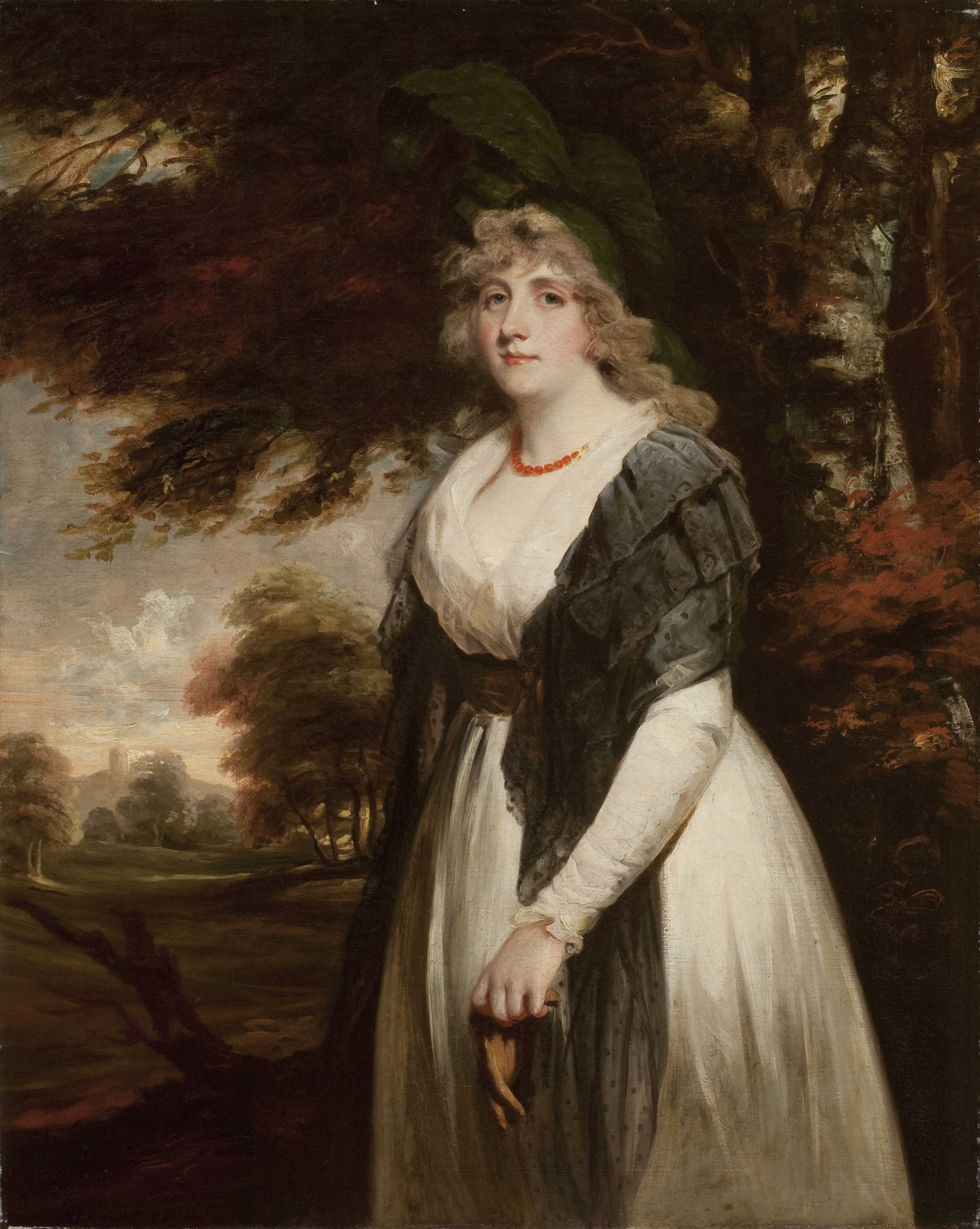
John Hoppner (English, 1758–1810), "Elizabeth James Parkyns" (1767–1797), 1794, oil on canvas. Taft Museum of Art, 1931.470
